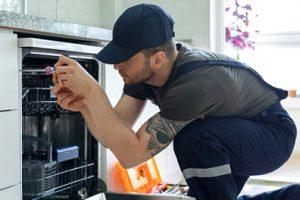When your washing machine stops agitating, it can be a major inconvenience. This issue can stem from various causes, but don’t worry—many of them are easy to fix with a bit of guidance. In this blog post, we will explore several common reasons why your washing machine that won’t agitate and provide step-by-step instructions to help you get it back in working order. Let’s dive in!
Understanding Why Your Washing Machine Won’t Agitate

Before jumping into the solutions, it’s crucial to understand why your washing machine might not be agitating. The agitation cycle is essential because it helps to clean your clothes by moving them around in soapy water. When this process fails, your clothes won’t get clean, which defeats the purpose of doing laundry. Several issues could be causing this problem:
- Mechanical Failures: Components like the agitator itself, belts, and gears can wear out or break.
- Electrical Problems: Faulty wiring or issues with the control board can interrupt the agitation cycle.
- Blocked or Damaged Parts: Objects stuck in the machine or damaged internal parts can prevent proper agitation.
Diagnosing the Problem
Before you can fix the issue, you need to diagnose it accurately. Here’s how you can start:
Step 1: Check the Agitator
The agitator is the central post in your washing machine’s drum that moves back and forth during the wash cycle. Here’s what to look for:
- Inspect for Damage: Remove any clothes and check if the agitator is visibly damaged or loose.
- Manual Test: Try turning the agitator by hand. If it moves freely without any resistance, it may be disconnected or the coupling could be broken.
Step 2: Examine the Belts
Washing machines use belts to connect the motor to the agitator. If these belts are worn out or broken, the agitator won’t work.
- Locate the Belts: Refer to your washing machine’s manual to find out where the belts are located.
- Check for Wear and Tear: Look for any signs of fraying, cracking, or snapping. If the belts are damaged, they will need to be replaced.
Step 3: Investigate the Motor and Control Board
Sometimes, the issue lies with the motor or the control board.
- Listen for Sounds: When you start the wash cycle, listen for any unusual noises coming from the motor.
- Check Electrical Connections: Ensure all wiring to the motor and control board is secure. Loose wires can prevent the machine from agitating.
How to Fix a Washing Machine That Won’t Agitate
Once you’ve identified the possible cause, it’s time to fix it. Here are the steps you can take for each scenario.
Fixing the Agitator
If the agitator is the problem, follow these steps:
- Remove the Agitator: Most agitators are held in place by a bolt. Use a socket wrench to remove the bolt and lift the agitator out of the drum.
- Inspect the Coupling: The coupling connects the agitator to the drive shaft. If it’s broken, you’ll need to replace it.
- Replace the Agitator or Coupling: If either part is damaged, order a replacement from the manufacturer and install it by reversing the removal steps.
Replacing Worn-Out Belts
If the belts are the issue, here’s how to replace them:
- Access the Belts: Unplug the washing machine and remove the back panel to access the belts.
- Remove the Old Belts: Carefully slide the old belts off the pulleys.
- Install New Belts: Fit the new belts around the pulleys, ensuring they are aligned correctly. Replace the back panel and plug the machine back in.
Addressing Motor and Control Board Issues
If the motor or control board is the culprit:
- Test the Motor: Use a multimeter to check the motor’s continuity. If the motor is faulty, it will need to be replaced.
- Check the Control Board: Look for any visible signs of damage on the control board. If necessary, replace the control board with a new one from the manufacturer.
Preventing Future Issues
To prevent your washing machine from refusing to agitate in the future, consider these maintenance tips:
- Regular Cleaning: Keep the drum and agitator clean to prevent buildup that can cause mechanical issues.
- Inspect Belts Periodically: Check the belts every few months for signs of wear and replace them as needed.
- Avoid Overloading: Overloading your washing machine can strain the agitator and other components, leading to premature wear and tear.
When to Call a Professional

While many washing machine issues can be fixed at home, there are times when calling a professional is the best option. If you’re not comfortable performing any of the above steps or if the problem persists after attempting the fixes, it’s time to seek expert help. A qualified technician can diagnose and repair the issue quickly and safely.
If you need professional assistance, don’t hesitate to contact us at 0567750003. Our experienced technicians are ready to help you get your washing machine back in perfect working order.
Conclusion
Fixing a washing machine that won’t agitate can seem daunting, but with the right guidance, many common issues are easy to diagnose and repair. By understanding the potential causes and following the steps outlined in this guide, you can save time and money while ensuring your laundry gets the thorough cleaning it deserves. Remember to maintain your washing machine regularly to prevent future problems, and don’t hesitate to call a professional if you need assistance. Happy washing!







